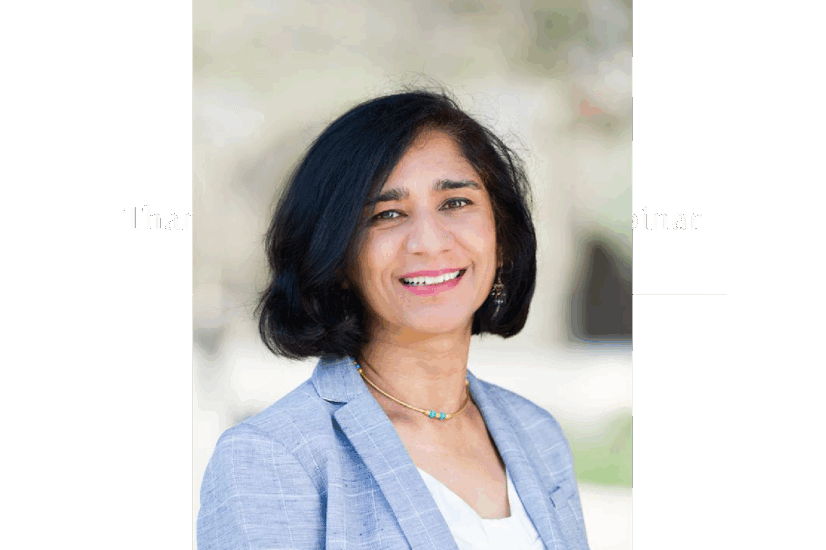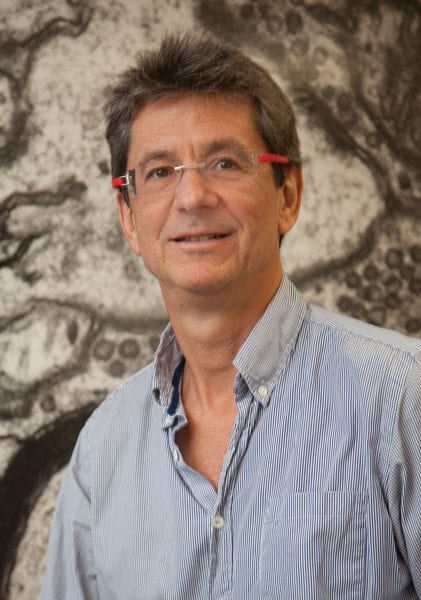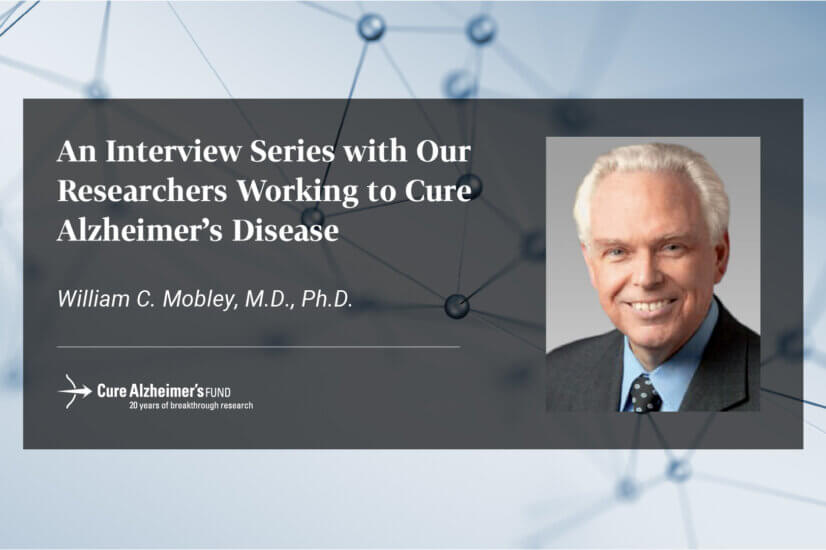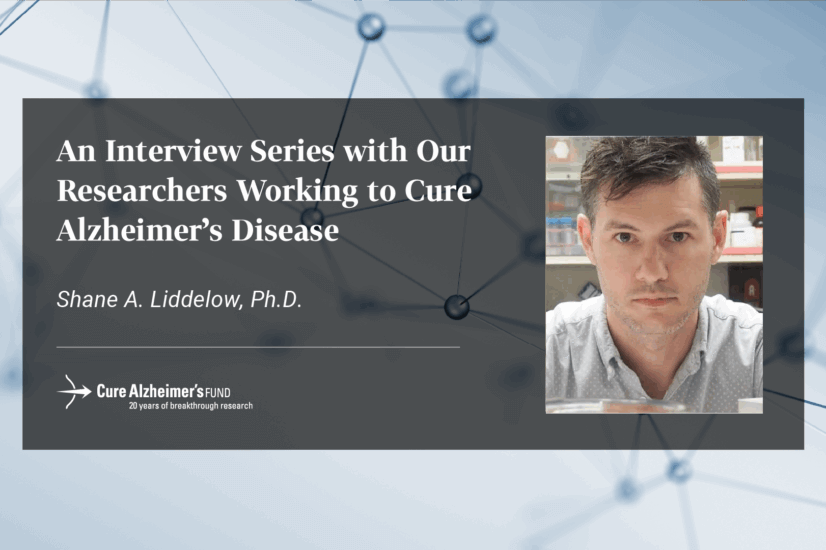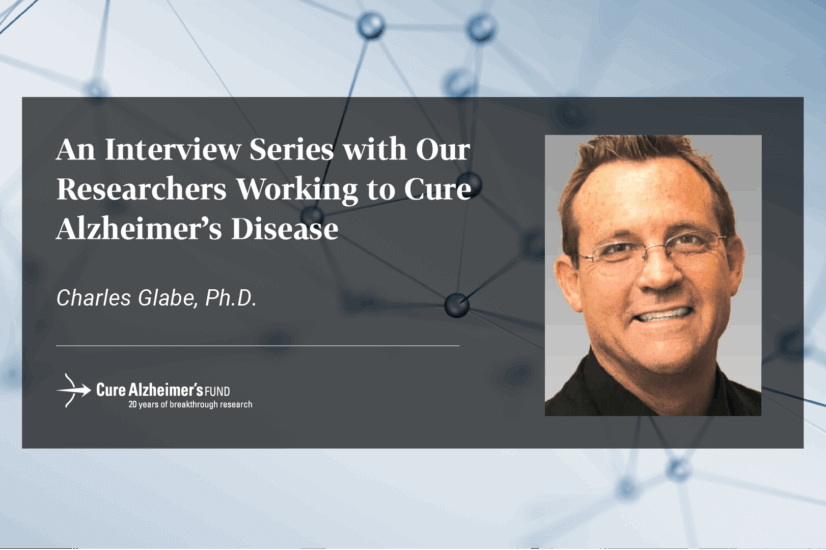Roberto Malinow has always felt at home in a lab. He began his career as a summer research student and today has become a highly awarded and honored scientist and member of Cure Alzheimer’s Fund’s Research Consortium. He has lived in Milan, Zurich, Paris, London, Buenos Aires, Argentina, and all over the United States, bringing a truly global perspective to his work.
Growing up
Dr. Malinow was born in Buenos Aires to a quiet, thoughtful physician-scientist and a loving homemaker. He grew up with an older sister and a younger brother with whom he is still close.
In 1963, Malinow’s family moved to Portland, Ore., for his father’s career. Malinow was 7 at the time and couldn’t speak English. One of his earliest memories in America was at school. “An announcement was made over the loudspeaker and everyone started crying. I didn’t know what was going on, but I cried, too.” It was Nov. 22, 1963—the day John F. Kennedy was assassinated.
As a child, Malinow remembers his father always coming home being very excited about his work. “He would say things like, ‘I’m thinking about this great experiment.’ Then he would draw graphs and make predictions.” That’s how Malinow was introduced to the world of science.
Education
After high school Malinow attended Reed College in Portland, Ore. “I studied math there. Even though I wasn’t particularly good at it, I loved it—it was so clean and beautiful. I never got great grades nor did well on standardized exams. And I barely got into medical school at New York University.” But that didn’t dissuade him from pursuing his passions. While at medical school he attended a lecture by Rodolfo Llinas on synapses. After that, he was hooked on the topic.
Malinow earned his M.D. in 1984 and returned to the West Coast to attend graduate school at UC Berkeley. There he finished his Ph.D. in neurobiology in just two years. He served as a medical resident for a year and then received training as a post-doctorate fellow in the lab of Richard Tsien (at Yale and Stanford).
In 1994, Malinow started a lab at Cold Spring Harbor, Long Island, N.Y. At CSHL he continued work he had started as a graduate student—trying to understand how synapses are modified during a model of learning called long-term potentiation (LTP), which refers to the persistent synaptic strengthening seen after a brief period of intense synaptic activity. “Through the visionary generosity of the institution, we were able to acquire and develop many new technologies,” says Malinow.
“By combining electrophysiology, molecular biology and imaging, we contributed to the solution of a longstanding and hotly debated question: What changes at the synapse during LTP?,” he says. “We identified an increase at the synapse of postsynaptic neurotransmitter receptors as a primary mechanism by which synapses are strengthened during LTP.” Malinow and his colleagues found similar mechanisms underlying some forms of learning. Many of the tools and ideas they developed addressing this basic science question allowed them to start asking questions related to Alzheimer’s disease.
Alzheimer’s
When Malinow’s father was 84 (and still working), he was diagnosed with Alzheimer’s disease. “I had been trained as a doctor so I knew about the disease, but I hadn’t ever experienced it firsthand,” says Malinow. “My mother, who was very gregarious and loving, took care of my dying father on her own at home for four years and then with full-time help until he died three years later. She was pretty heroic.”
Malinow joined the Cure Alzheimer’s Fund Research Consortium in 2008 after running into colleague Sam Sisodia (another consortium member) at a Society for Neuroscience meeting. “Since I was new to the Alzheimer’s field, I bounced a lot of ideas off of him and he told me which ones were ridiculous and which ones were good. Then I met Rudy Tanzi through Sam,” says Malinow. “Cure Alzheimer’s Fund is a very lean and agile foundation. They’ve identified the best neuroscientists and they’re willing to take chances on individuals who have a track record of doing good work. Their support has been instrumental in my ability to carry on high-risk, high-payoff projects.”
Current work
“Historically, I’ve always worked on synapses. I find them beautiful and I love studying them. Some of the earliest signs of Alzheimer’s are at synapses, so we’ve looked at what might be happening there,” says Malinow. For instance, when you learn, it is thought that some synapses get stronger and some weaker. “We think that Alzheimer’s hijacks the normal process of synaptic weakening (which has been rigorously elucidated) and makes some of the synapses too weak.” Overall, Malinow is trying to understand how some of these normal processes go into overdrive and contribute to the disease. “Science can be very hard, and often you just have to plug away and persevere.”
Personal life
When Malinow is not working he likes to play tennis. He’s been playing since he was 8, although he took a 20-year hiatus when he started college, which he says gave him an extra 20 years on his knees. “Tennis clears my mind and I like occasionally beating guys half my age. The ultimate scientist would have the creative artistry of tennis pro Roger Federer and the dogged perseverance of pro Rafael Nadal.”
He also loves to travel with his girlfriend, a cancer biologist. Malinow has a 23-year-old daughter he thinks the world of; she graduated with a degree in bioengineering from Georgia Tech and currently works at Gilead Sciences, a biotech company in San Diego.
“We’ve had lots of doctor/scientists in our family—my father, my sister, my daughter and me. But my brother runs a pizza parlor and he’s the wealthiest of all of us,” he jokes. Still, Malinow wouldn’t trade his career for anything.
